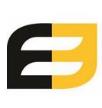No to Apartheid Education in Israel -- "Separate educational facilities are inherently unequal"
Equal Education stands in solidarity with learners, students, teachers and academics facing separate and unequal education in Israel and the Occupied Palestinian Territories.
Palestinian Arab school children in Israel make up approximately 25% of the country's school students, at around 480,000 pupils.[1] But from elementary to high school, Arab and Jewish students learn in separate schools.
State funding for education comes from two sources, municipalities and the Ministry of Education. From each of these Arab schools receive less than Jewish schools do.
This was recognised by Israel itself. In February 2001, the Israeli government reported to the Committee on the Rights of the Child that:
"in 1991, the total investment in education per pupil in Arab municipalities was approximately one-third of the investment per pupil in Jewish municipalities. Government investment per Arab pupil was approximately 60% of the investment per Jewish pupil."[2]
The Israeli government subsequently committed to a plan to address this disparity, but there is no available evidence to show that funding has been substantially equalised.
State statistics published in 2004 reveal that for the academic year 2000-2001, public investment in Arab schools equaled an average of NIS 534 per Arab student, compared to NIS 1,779 per Jewish student, or three times more.[3] This under-funding is manifested in many areas, including the poor infrastructure and facilities characteristic of Arab schools and the more crowded classrooms.
In terms of long-term investment in the education, only four teacher training institutes operate in the Arab education system, compared to 55 in the Hebrew education system.[4]
Educational disadvantage for Arab children in Israel begins from the earliest stages of the educational process. In 2007/8 around 67.4% of Arab two- to five-year-olds were enrolled in kindergartens, compared to 84,9% of Jewish children in the same age group, a gap that is larger in the youngest age groups.[5]
Arab students are dramatically underrepresented in Israel's universities and other institutes of higher education. Arab academics constitute only about 1.2% of all tenured and tenure-track positions in Israeli universities, leaving Arab citizens marginalized in the production of knowledge in society.
Israel's Supreme Court, in 2009, cautioned against educational segregation and inequality, quoting the famous line from the US Supreme Court's 1954 decision against segregated schools, Brown v Board of Education: "Separate educational facilities are inherently unequal."
Israel also imposes a discriminatory curriculum that seeks to intellectually dispossess both Jewish Israeli and Palestinian Arab children of a fair understanding of history. This is symbolised by the banning of the word "nakba" from all textbooks. There is a scholarly consensus that in1948/9, after Israel was established, around 700,000 Palestinian Arabs became refugees. Some fled, some were expelled, and almost none were permitted to return. The evocative word "nakba" (meaning "catastrophe") is used to describe these events. It is closely associated with Israel's Independence Day, which many Jewish Israelis celebrate as a day of freedom. Not only is the word "nakba" banned from textbooks, but schools which mark the "nakba" in any way whatsoever are liable to have their state funding withdrawn. This law against academic freedom and free speech was passed by the Israeli Knesset (Parliament).[6]
All of the above describes what is taking place within Israel's recognised borders. However, the conditions under which children must attend school in the Gaza Strip and in the occupied West Bank are far worse. These are territories which Israel has not annexed, but controlled militarily for nearly 47 years. In the occupied territories Israeli Jews and Palestinian Arabs live under separate legal systems, and almost all aspects of life, including schooling, are separate and unequal, to a far greater extent than within Israel itself.
Any empathetic South African who visits the West Bank, and looks at life through the daily experiences of Palestinians, will find the Apartheid parallels inescapable and the analogy morally appropriate.
Equal Education, a movement led by youth, and including parents, teachers and community members, fighting for quality and equal education in South Africa, has always sought to show solidarity with similar struggles elsewhere. We have previously hosted activists from Zimbabwe, Chile and Israel, and have visited organisations undertaking similar struggles in Tanzania and the United States.
Those struggling to overcome unequal education and injustice, including in Israel and Palestine, will always have our support. We call on the Israeli government to equalise and fully integrate education within its borders. We also call on Israel to fully withdraw from the West Bank, and to end all external control over Gaza, so that children can enjoy schooling free from military occupation.
Footnotes:
1. The Central Bureau of Statistics (Israel), Statistical Abstract of Israel 2008, No. 59, Table 8.13.
2. Ministry of Justice, Initial Periodic Report, p. 303 cited in Human Rights Watch ‘Second Class: Discrimination Against Palestinian Arab Children in Israel's Schools' 2001 .
3. The Central Bureau of Statistics (Israel), New Survey-Investment in Education 2000/1, 3 August 2004 (Hebrew).
4. The Central Bureau of Statistics (Israel), Statistical Abstract of Israel 2008, No. 59, Table 8.44 cited in Adalah, ‘The Inequality Report: The Palestinian Arab Minority in Israel' 2011.
5. The Central Bureau of Statistics (Israel), Statistical Abstract of Israel 2009, No. 60, Table 8.4.
6. Haaretz ‘Knesset passes two bills slammed as discriminatory by rights groups' 24 March 2011
Issued by Equal Education, March 10 2014
Click here to sign up to receive our free daily headline email newsletter

